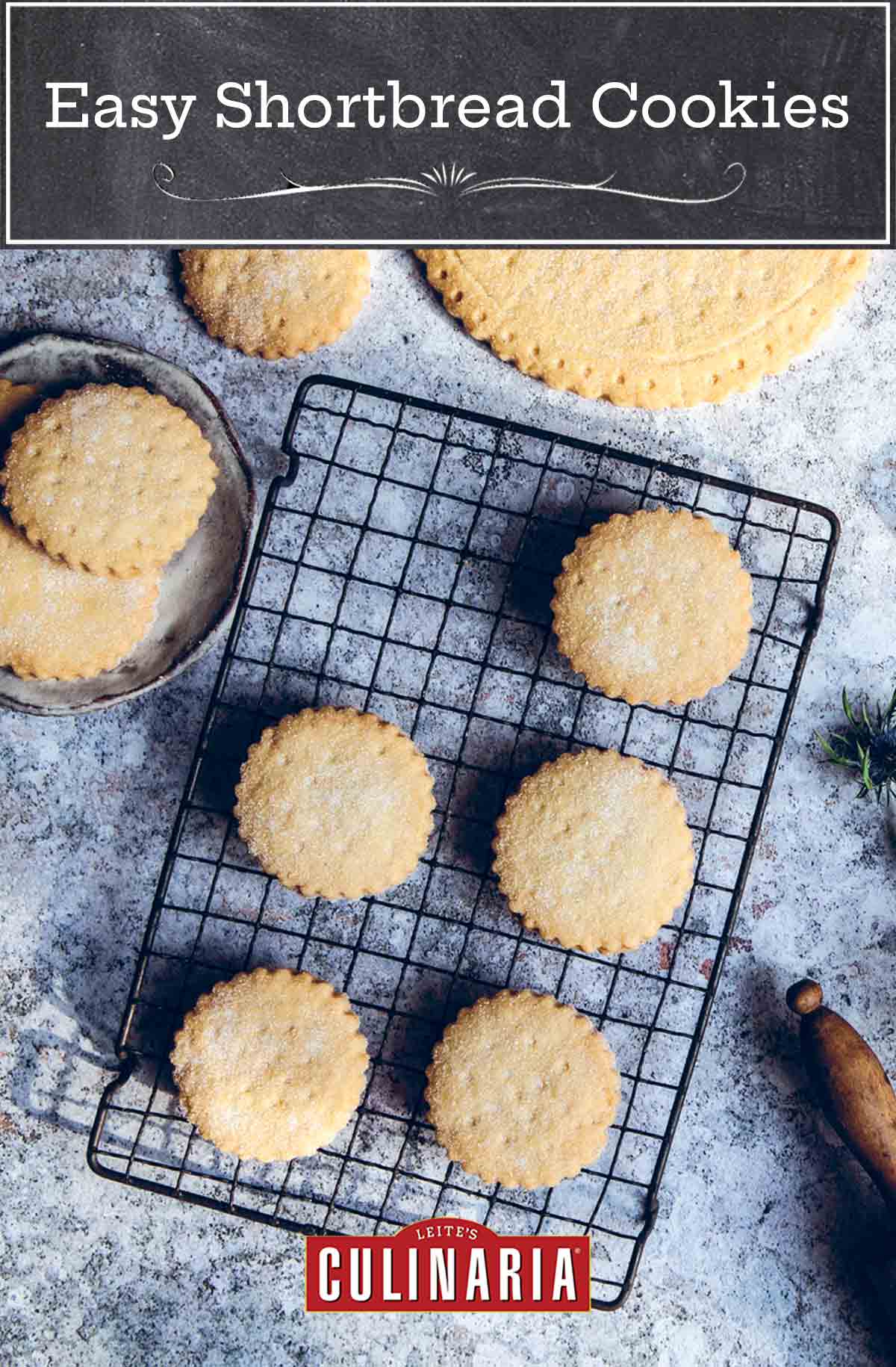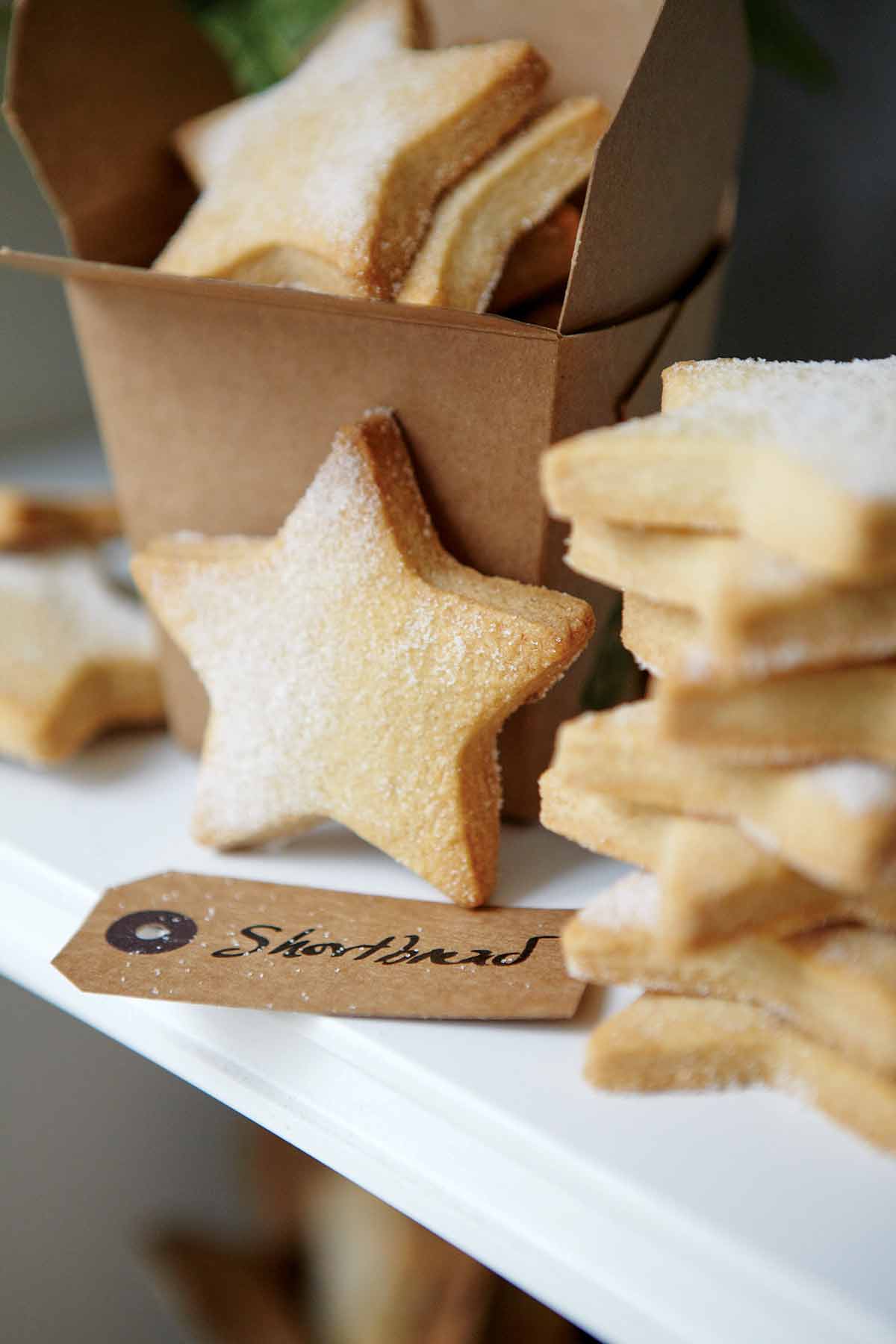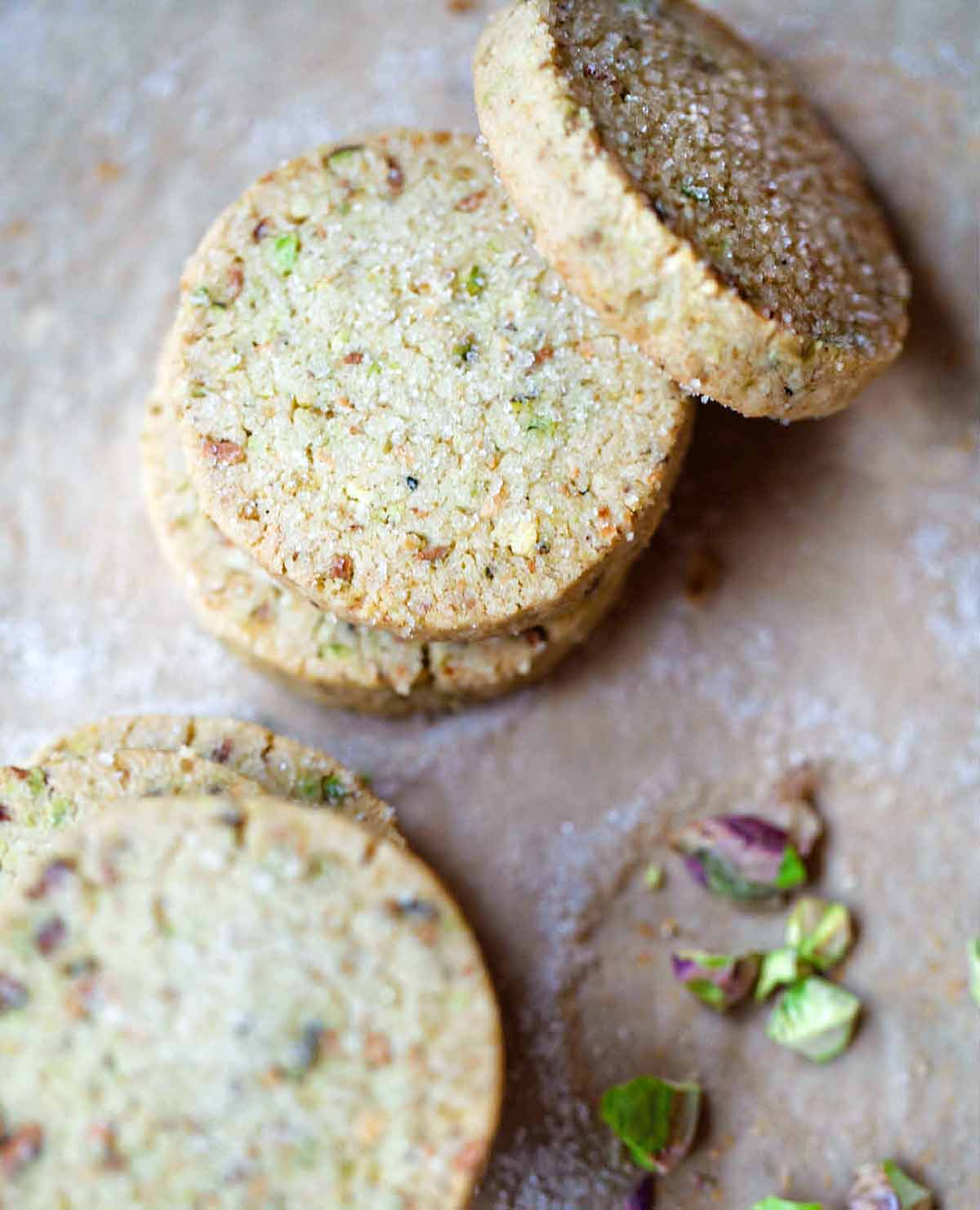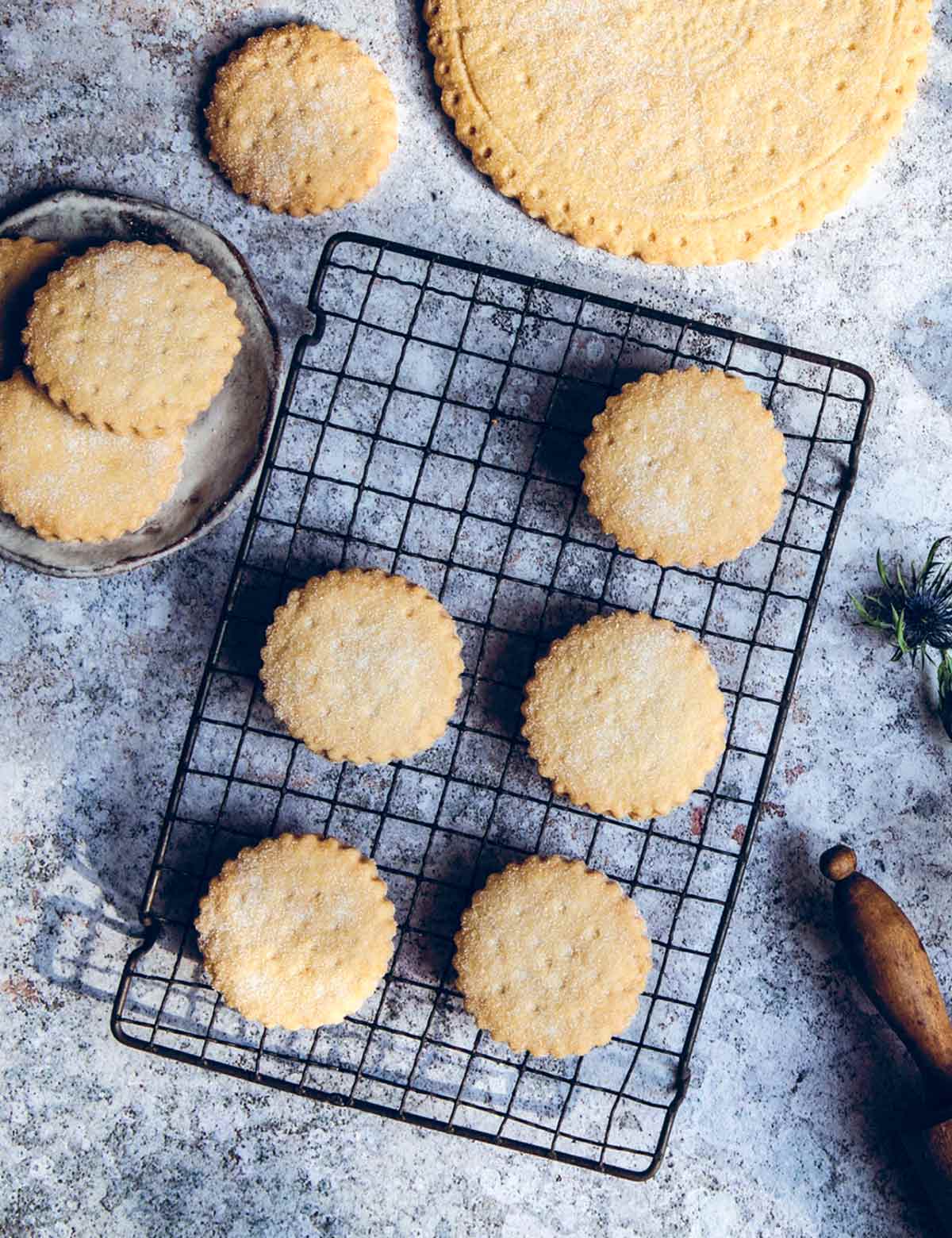
TL;DR (Quick-Answer Box)
- What it is: These classic British butter biscuits use a mix of flour and cornstarch for a brittle, beautifully crumbly texture that melts delightfully in your mouth.
- Why you’ll love it: A simple four-ingredient cookie ready in under an hour of hands-on time, delivering a perfect canvas for tea, coffee, or a gentle afternoon treat.
- How to make it: Rub the butter into the dry ingredients to form a dough, chill it briefly, pat it flat (don’t roll!), cut into shapes, and bake until barely golden.
Jump To
According to Florence Marian McNeill in a 1929 book, The Scot’s Kitchen, a decorated shortbread, known as “infare-cake,” was the wedding cake ol’ rural Scotland. On the first day of the marriage, or “Infare day,” the infare-cake was broken over the bride’s head on the threshold of her new home. This very old custom finds its origin in paganism.—Regula Ysewijn

Why Our Testers Loved This
Our testers are describing these cookies as “buttery and blissful” and “the easiest cookies I’ve ever made.” They love that they come together quickly, don’t require rolling, and are “light and tender with just the perfect amount of sweetness.”
Notes on Ingredients
- Cornstarch, semolina, or rice flour–This gives the shortbread its classic crumbly texture.
- Superfine sugar–Just as in traditional Scottish shortbread, Using superfine sugar ensures that the shortbread has a delicate ‘melt-in-your-mouth’ texture. If you don’t have superfine sugar on hand, just toss your granulated sugar into a blender or food processor and blitz until finely ground, but not powdery.
- Butter–Use the best-quality butter you can find as the flavor will shine in your finished cookies. We recommend using unsalted butter here, but you can use salted butter if that’s what you have on hand.
Step-by-Step Instructions
- Combine the flour, cornstarch, sugar, and salt. Rub the butter in with your fingers until combined. Knead the dough until it comes together into a smooth ball.
- Chill the dough for 1 hour. While the dough is chilling, preheat the oven to 325°F and line a rimmed baking sheet with parchment paper.
- Pat the dough into a 1/4-inch-thick round. Use a cookie or biscuit cutter to cut out rounds and place on the baking sheet. Prick the shortbread rounds with a fork.
- Bake the shortbread. Remove from the oven when it is a very pale golden brown color and sprinkle with sugar. Cool completely on a wire rack.
Want to Save This?
Recipe FAQs
To make a smooth top on your shortbread, place a sheet of parchment paper on top of the dough and brush it with the palm of your hand.
You sure can. Prepare the dough as described in step 1. Line an 8-inch (20-cm) square baking pan with parchment paper. Place the dough in the pan, and then pat and push it out to cover the base of the pan.
Place a second sheet of parchment paper on a baking sheet and flip the pan over to turn the dough out onto the baking sheet. Slide the dough back into the lined pan, with the smooth side up.
Chill the dough for 1 hour. Use a knife to gently score lines to cut the shortbread into 16 fingers and prick lightly with a fork. Bake the shortbread in the middle of the oven until barely golden, about 35 minutes.
In the 1990s, it was popular in tearooms to push glacé cherries into the shortbread dough to make cherry shortbread. Today it’s popular to add edible lavender. If you like nuts in your shortbread, follow this method for making pistachio shortbread.
Rice flour, cornstarch, or semolina is added to these cookies to give them their classic crumbly texture.
Pro Tips & Troubleshooting
- Don’t overbake your shortbread. It’s ready when the dough has turned a very pale golden color. Don’t wait for them to turn brown.
- The unbaked dough can be kept refrigerated for up to 1 week or frozen for up to 1 month before baking. Baked and cooled cookies can be stored in the freezer for up to 3 months.
Write a Review
If you make this recipe, or any dish on LC, consider leaving a review, a star rating, and your best photo in the comments below. I love hearing from you.–David
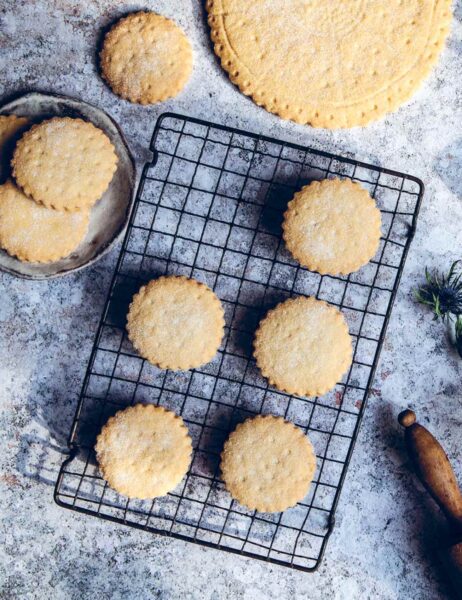
Easy Shortbread Cookies
Equipment
- Round cookie cutter
Ingredients
- 1 2/3 cups all-purpose flour, plus more for dusting
- 7 tablespoons cornstarch, 1/3 cup (50 g) semolina, or 1/3 cup (50 g) rice flour, or a combination
- 6 tablespoons superfine sugar (or blitz granulated sugar in a food processor until finely ground), plus extra for sprinkling
- Pinch of sea salt
- 1 1/2 sticks (6 oz) butter, at room temperature but not soft
Instructions
- In a large bowl, combine the flour, cornstarch, semolina, or rice flour, sugar and salt. Use your fingers to rub in the butter until the mixture is the consistency of breadcrumbs. Knead the mixture until it comes together into a smooth dough, 5 to 10 minutes. Do not over knead, or the biscuits will be brittle.
- Wrap the dough in plastic wrap and chill for 1 hour.
- Preheat your oven to 325°F (163°C).
- Line a rimmed baking sheet with parchment paper.
- Flour your work surface and pat the dough flat with your hands until it is about 1/4 inch (6.5 mm) thick. Do not roll the dough, or the shortbreads will be chewy.
- Use a 3-inch (8-cm) cookie or biscuit cutter to cut out cookies. Pat the leftover dough back together and keep cutting out cookies until there is no dough left.
- Neatly prick the shortbreads all over with a fork, place them on the prepared baking sheet, and bake in the middle of the oven until just barely golden around the edges, 30 minutes.
- Remove the shortbreads from the oven and immediately sprinkle with superfine sugar. Let cool on the sheet for 5 minutes, then move them to a wire rack to cool completely.
- Keep the shortbreads in an airtight container and eat them as quickly as possible.
Notes
- Make-ahead–The cookie dough can be stored in the fridge for up to 1 week or in the freezer for up to 1 month before baking.
- Freezing–Baked shortbread cookies can be stored in the freezer for up to 3 months.
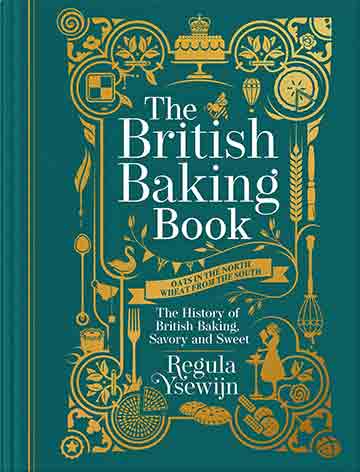
Explore More with AI
Nutrition
Nutrition information is automatically calculated, so should only be used as an approximation.
Recipe Testers’ Reviews
“Down-home” is how I would describe these easy shortbread cookies—they really are so pleasing without any bells and whistles. And this recipe offers you buttery tender morsels that are simply perfect to have with a cup of tea or coffee.
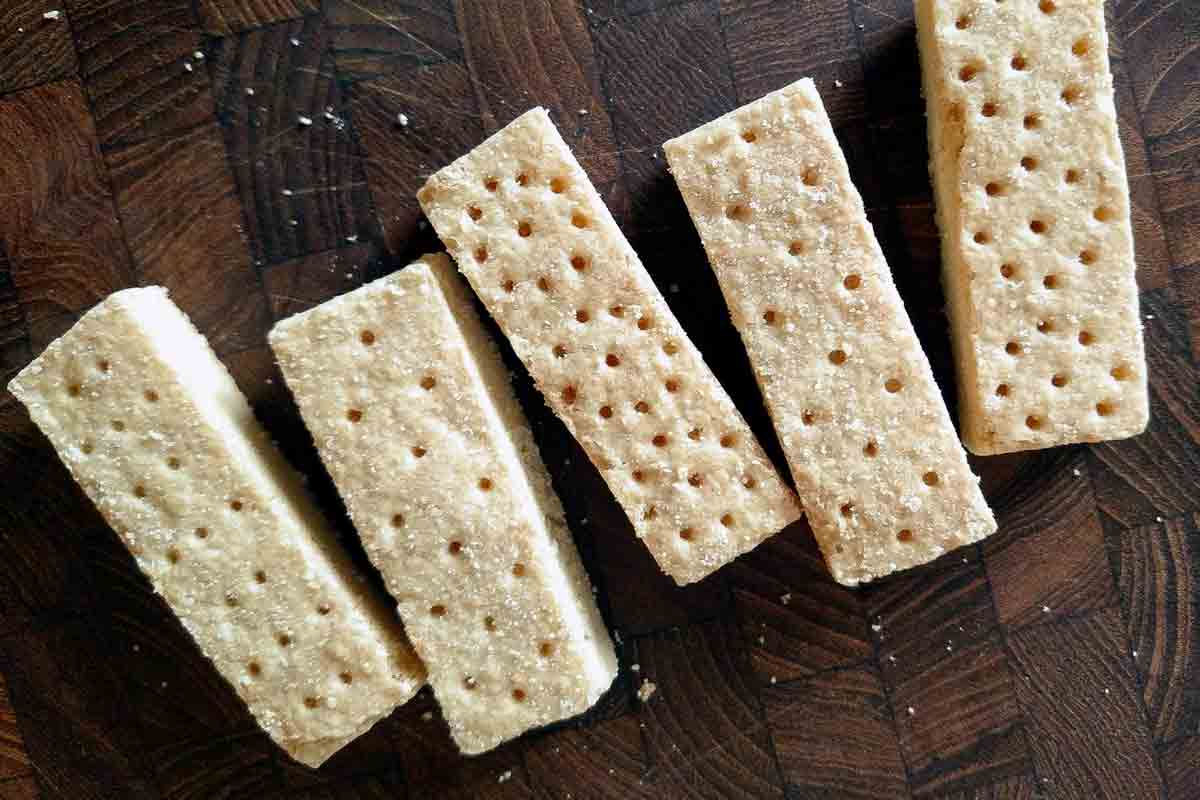
I love being able to mix the dough solely by hand, and the option for making shortbread fingers in a baking pan is welcome in my kitchen, as it eliminates any dough scraps. I made two batches of the shortbread fingers faithfully following the recipe for the first, and tweaking the method a bit the second.
Both batches offered equally delicious biscuits, but the adjustments I made to the second try worked very well.
Instead of chilling the dough first, I filled the baking pan immediately after mixing the dough so it would be easier to cover the bottom of the pan, then chilled the whole thing in the refrigerator for 90 minutes. While the oven preheated I scored the dough in 8 rows and 3 columns, which yielded 24 fingers that are 1” x 2.5” each. I pricked the surface in varied patterns just to make it more fun.
These may be the easiest cookies I’ve ever made! Not to mention, they are truly delicious—buttery, delicate, and crisp. I used a combination of cornstarch and rice flour (50/50) and I think it really gave them a wonderful texture.
I cut my cookies into tiny fingers and got 36 cookies, which was smaller than what was recommended but I think they are the perfect size—two bites each so that you don’t feel guilty going back for seconds. I’ll definitely be making this easy shortbread cookie recipe again for the holiday season.
Buttery and blissful—these easy shortbread cookies are delicious. They’re light and tender and just the perfect amount of sweetness. I especially enjoyed the sprinkle of sugar on top that is recommended when they come out of the oven.
They are a comfort indulgence at its best. Next time, I would consider adding cherries (as the author mentioned was popular) because I love their flavor.
I’m a big fan of shortbread but haven’t found a recipe that the dough does not fall apart. This was a great recipe, very simple. I think using other flours like semolina or cornstarch was a great addition.
